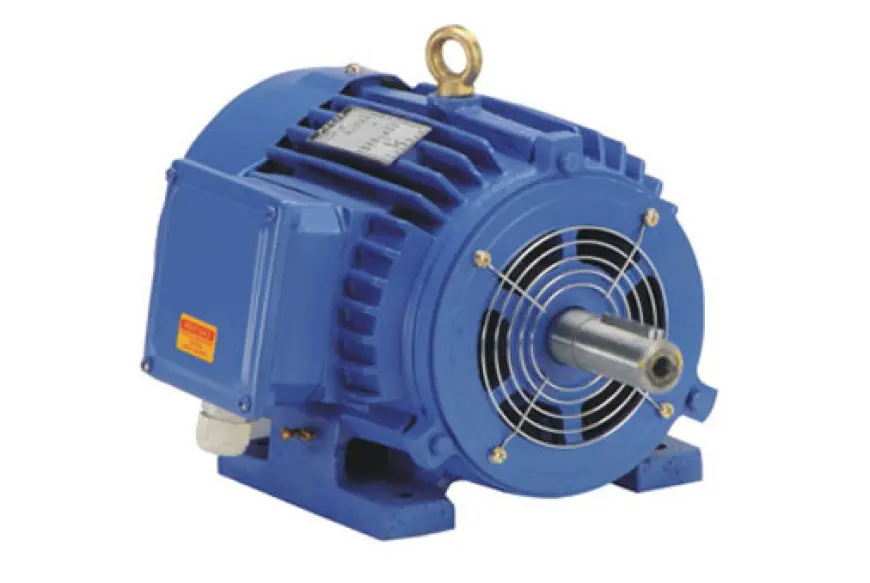Automotive Torque Actuator Motor Market Report 2030
One of the primary drivers propelling the automotive torque actuator motor market is the surging demand for electric and hybrid vehicles.

Introduction
The global automotive industry is witnessing a significant transformation with the rapid adoption of electric, hybrid, and advanced driver assistance systems (ADAS). Central to this transformation is the automotive torque actuator motor — a component critical for ensuring precise mechanical control, energy efficiency, and enhanced vehicle dynamics.
According to industry estimates, the Global Automotive Torque Actuator Motor Market, valued at USD 8.23 billion in 2024, is projected to grow to USD 12.39 billion by 2030, registering a CAGR of 7.14% during the forecast period. This growth is attributed to the increasing shift toward vehicle electrification, rise in ADAS deployment, integration of drive-by-wire technologies, and demand for intelligent control systems in modern vehicles.
Emerging Trends Shaping the Automotive Torque Actuator Motor Market
1. Rise of Intelligent Control Systems
The integration of intelligent and adaptive control systems is reshaping the torque actuator motor landscape. These systems enable real-time monitoring, automated feedback control, and seamless communication with the vehicle’s electronic control unit (ECU), paving the way for smart vehicle functionalities such as autonomous driving, predictive maintenance, and energy optimization.
2. Compact and Lightweight Motor Designs
OEMs are increasingly focused on reducing vehicle weight without compromising performance. This has led to the development of compact and lightweight actuator motors that maintain high torque density and durability, especially critical for electric and hybrid platforms.
3. Adoption of Brushless DC Motors (BLDC)
Brushless DC motors have gained popularity due to their efficiency, longer life cycles, and reduced maintenance needs. Their silent operation and ability to deliver precise torque output make them ideal for applications like electronic throttle control, turbochargers, and exhaust systems.
4. Magnetics and Materials Innovation
Advanced materials, such as rare-earth magnets and high-temperature resistant alloys, are being used to improve actuator motor efficiency. Enhanced magnetic properties help increase motor performance under extreme conditions, making them suitable for high-performance and electric vehicles.
5. Software-Defined Vehicles (SDVs)
As vehicles become more software-driven, actuator motors are now being designed to support over-the-air (OTA) updates and real-time diagnostics, allowing manufacturers to refine control algorithms post-production — a shift that aligns with the automotive sector’s transition toward SDVs.
Download Free Sample Report: https://www.techsciresearch.com/sample-report.aspx?cid=21424
Market Drivers: What’s Powering the Growth?
1. Electrification of the Vehicle Fleet
As governments worldwide push for carbon neutrality and reduced tailpipe emissions, automotive OEMs are moving rapidly toward electrified drivetrains. Torque actuator motors play a crucial role in managing power delivery, energy recovery, and dynamic control, particularly in electric power steering and regenerative braking systems.
2. Surge in Advanced Driver Assistance Systems (ADAS)
ADAS functions like lane-keeping assist, adaptive cruise control, and automated emergency braking rely heavily on precise torque application for steering, braking, and throttle control. Actuator motors are essential for translating electronic commands into mechanical actions — making them integral to ADAS.
3. Demand for Fuel Efficiency and Lower Emissions
Automotive torque actuator motors enable fine control of systems such as turbochargers and exhaust gas recirculation, directly contributing to fuel efficiency and emission reduction. These systems help manufacturers comply with stringent environmental norms like Euro 6, CAFÉ standards, and China VI.
4. Growing Popularity of Drive-by-Wire Systems
The shift from mechanical linkages to electronic systems has led to the rise of drive-by-wire technologies, which offer more responsive and accurate control. This trend is increasing the need for robust torque actuator motors capable of delivering real-time torque control.
5. Vehicle Customization and Enhanced Driving Experience
Consumers are increasingly demanding customizable driving modes such as eco, comfort, and sport. Torque actuator motors help alter vehicle behavior dynamically by adjusting throttle response, steering stiffness, and transmission shifts — elevating the driving experience.
Industry Key Highlights
- The electronic throttle control (ETC) segment is the fastest-growing application area, driven by its ability to enhance fuel efficiency, drivability, and integration with advanced powertrain systems.
- Brushless DC motors (BLDC) are emerging as the preferred motor type due to their high torque efficiency and minimal maintenance requirements.
- North America stands out as the fastest-growing regional market, backed by strong R&D, automotive innovation, and early adoption of electrification technologies.
- Automotive OEMs and Tier-1 suppliers are entering strategic alliances to develop tailored actuator motor solutions aligned with specific vehicle platforms and regulatory environments.
- Growing demand from developing economies in Asia-Pacific, Latin America, and the Middle East is opening new avenues for market expansion.
Competitive Analysis
The global automotive torque actuator motor market is moderately consolidated, with several key players focusing on innovation, product expansion, and partnerships. These players are investing heavily in electromagnetic design optimization, modular architecture, and intelligent sensor integration.
Major Companies Operating in the Market:
- Bray International Inc. – Known for its high-performance torque motors and actuators, especially in industrial and automotive automation.
- Continental AG – A major supplier integrating actuator motor solutions within its ADAS and drivetrain systems.
- CTS Corporation – Provides smart actuator motor solutions for hybrid and electric platforms.
- ElectroCraft, Inc. – Focuses on precision torque motors tailored for vehicle electrification needs.
- Emerson Electric Co. – Supplies robust motors with a focus on torque density and reliability.
- HIWIN Technologies Corp.
- Johnson Electric Holdings Limited – Offers compact motor designs for space-constrained EV systems.
- Mabuchi Motor Co., Ltd.
- MITSUBA Corporation – Supplies actuator motors for ETC and advanced powertrains.
- NSK Ltd. – Known for innovation in motion & control, including electric actuator technologies.
These companies are expected to retain market leadership through innovation, production capacity expansion, and strategic localization in emerging markets.
Future Outlook
The global automotive torque actuator motor market is expected to maintain its positive growth trajectory through 2030, driven by the synergy between vehicle electrification, ADAS penetration, and automated mobility. As the automotive landscape transitions toward zero-emission, self-driving vehicles, actuator motors will become even more critical to support precision control and power efficiency.
The next wave of innovation is anticipated to focus on:
- Integration with solid-state batteries and high-voltage systems
- Use of artificial intelligence and machine learning to predict actuator performance degradation
- Enhancement of cybersecurity within actuator control systems
- Development of recyclable and sustainable actuator components
The market will also see greater regional diversification, with Asia-Pacific and Latin America expected to emerge as high-growth regions due to automotive production shifts and increasing consumer preference for advanced safety systems.
10 Benefits of the Automotive Torque Actuator Motor Market Report
- Comprehensive Market Sizing: Accurate assessment of the global and regional market sizes from 2020 to 2030.
- Growth Forecasts: Forecasts based on CAGR, revenue, and volume for key segments.
- Emerging Trends Analysis: Insight into new technologies, applications, and regulatory impacts.
- Segment-wise Insights: Detailed breakdown by type, motion output, application, and region.
- Competitive Landscape: Profiles of key players, their product portfolios, and market strategies.
- Opportunity Mapping: Identification of untapped markets and investment-worthy segments.
- Regulatory Insights: Overview of key policies impacting the adoption of actuator motors.
- Technological Advancements: Information on R&D trends, material innovations, and design evolution.
- Strategic Recommendations: Actionable intelligence for OEMs, suppliers, and investors.
- Customization Availability: Flexible reporting with 10% free customization upon request.
Conclusion
The Automotive Torque Actuator Motor Market is at the forefront of the automotive sector’s shift towards electrification, automation, and intelligent mobility. As vehicles become smarter and more efficient, the role of torque actuator motors is expanding from being mere mechanical components to becoming key enablers of future mobility.
With demand rising across both developed and emerging economies, and with ongoing advancements in materials, miniaturization, and digital integration, the future of the automotive torque actuator motor market looks dynamic and full of opportunity.
This growth journey offers substantial opportunities for stakeholders — from manufacturers and suppliers to R&D firms and investors — who can align their strategies with market shifts and technological evolution.
Contact Us-
Mr. Ken Mathews
708 Third Avenue,
Manhattan, NY,
New York – 10017
Tel: +1-646-360-1656
Email: [email protected]
Website: www.techsciresearch.com
What's Your Reaction?
 Like
0
Like
0
 Dislike
0
Dislike
0
 Love
0
Love
0
 Funny
0
Funny
0
 Angry
0
Angry
0
 Sad
0
Sad
0
 Wow
0
Wow
0



















































